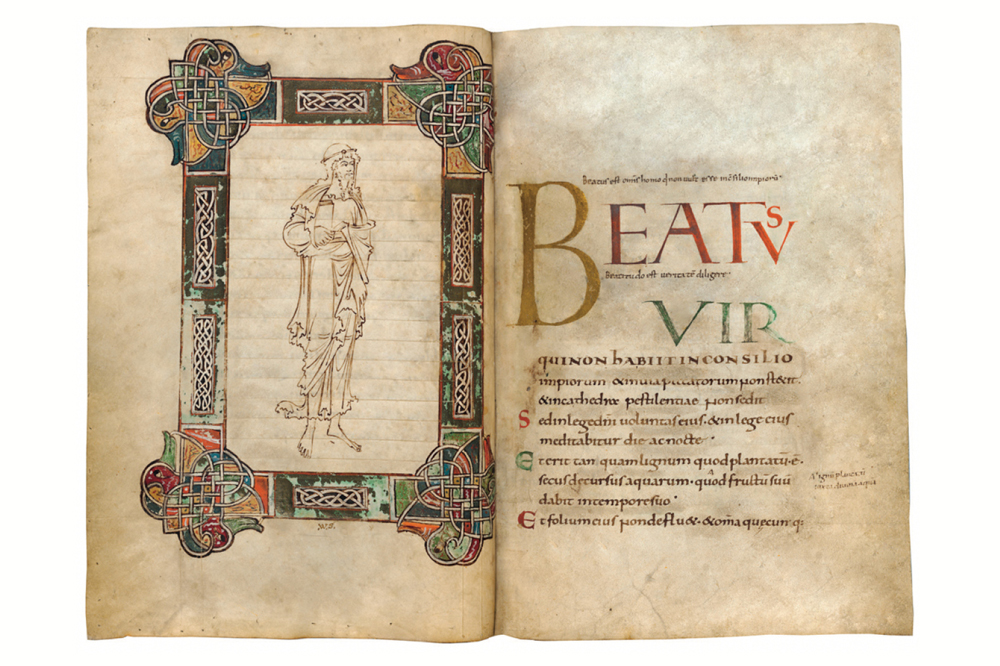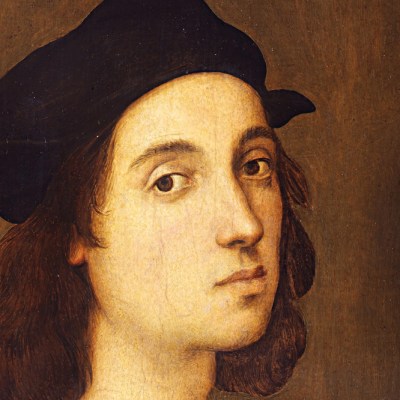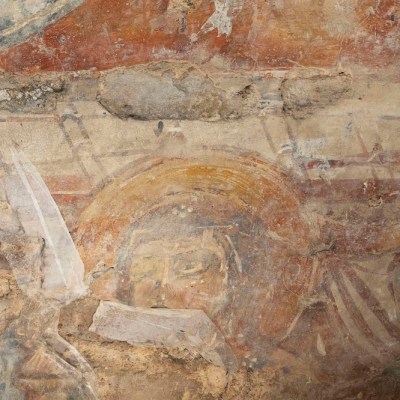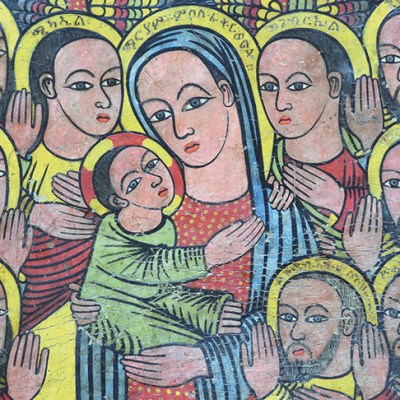This December marks 850 years since the murder of Archbishop Thomas Becket in Canterbury Cathedral by four of Henry II’s knights. At the time, the martyr’s blood was collected, diluted and sold in leaden flasks to pilgrims. The cathedral was refurbished with red and white marble, and purple stone was used to construct a shrine that shimmered red in the light of votive candles. The shrine was destroyed during the Reformation but now, in a book published to coincide with the anniversary of Becket’s death, Christopher de Hamel argues that its only surviving relic has been discovered.
 The text, aptly bound in vermilion red, is only 58 pages long, which belies the magnitude of its claim: that there is a book of psalms (a psalter) in the Parker Library of Corpus Christi College, Cambridge, which was once treasured by St Thomas Becket and was later exhibited to pilgrims as a relic. The psalter, known by its shelf mark MS 411, dates to the late 10th century and has pages decorated in the so-called Franco-Saxon style (they can be viewed online via the Parker Library’s digital facsimile). The first clue connecting the manuscript to Becket was brought to de Hamel’s attention by the biblical historian Eyal Poleg, during a conversation over lunch and coffee in Cambridge. Poleg showed de Hamel an entry in a 14th-century inventory of treasures in Canterbury Cathedral. Translated from Latin, the entry reads: ‘Item, a binding with the Psalter of St Thomas, bound in silver-gilt decorated with jewels’. De Hamel immediately remembered reading the line elsewhere: on the flyleaf of MS 411 in the Parker Library, where he was then head librarian. The two scholars rushed to check the manuscript for themselves. Sure enough, there it was: a 16th-century note at the end of the 10th-century text, describing the now-lost binding and identifying the book as having belonged to Thomas Becket.
The text, aptly bound in vermilion red, is only 58 pages long, which belies the magnitude of its claim: that there is a book of psalms (a psalter) in the Parker Library of Corpus Christi College, Cambridge, which was once treasured by St Thomas Becket and was later exhibited to pilgrims as a relic. The psalter, known by its shelf mark MS 411, dates to the late 10th century and has pages decorated in the so-called Franco-Saxon style (they can be viewed online via the Parker Library’s digital facsimile). The first clue connecting the manuscript to Becket was brought to de Hamel’s attention by the biblical historian Eyal Poleg, during a conversation over lunch and coffee in Cambridge. Poleg showed de Hamel an entry in a 14th-century inventory of treasures in Canterbury Cathedral. Translated from Latin, the entry reads: ‘Item, a binding with the Psalter of St Thomas, bound in silver-gilt decorated with jewels’. De Hamel immediately remembered reading the line elsewhere: on the flyleaf of MS 411 in the Parker Library, where he was then head librarian. The two scholars rushed to check the manuscript for themselves. Sure enough, there it was: a 16th-century note at the end of the 10th-century text, describing the now-lost binding and identifying the book as having belonged to Thomas Becket.
An authority on medieval manuscripts, de Hamel has a flair for storytelling, tracing the journeys of books through time as if following a migrating swift. In The Book in the Cathedral, a range of contemporary sources are mined for evidence – from medieval biographies of Becket and the manuscript itself to portraits of the saint in mosaic and stained glass. Titles of texts rarely encountered by non-specialist readers are mentioned with accessible nonchalance: among them are John of Salisbury’s 12th-century Polycraticus and Metalogicon, copies of which the author is believed to have given to Becket. Such esoteric subjects as the bibliographical predilections of certain monastic orders also make an appearance. It’s a useful introduction to medieval book cultures, as well as a crash course in the dispute between Church and State that led to Becket’s martyrdom and de Hamel’s lively prose conjures up the rich and well-connected world of 12th-century Canterbury.
Detail of stained glass window in Canterbury Cathedral, showing Becket holding a book. Photo: TTaylor/Wikimedia Commons (public domain)

This is not to say the book will prove uncontroversial. For instance, de Hamel rarely acknowledges the biases implicit in the medieval sources and glosses over what interest the Canterbury monks may have had in presenting a psalter as a special relic of Becket (bearing in mind that, as de Hamel notes, David’s conflict with Saul resonates with and therefore elevates Becket’s dispute with Henry II). Art historians may also resist de Hamel’s interpretation of a mosaic from Monreale in Sicily, made shortly after the archbishop’s death, which shows the saint carrying a small jewel-bound book ‘the right size for a Psalter’. Is it an image of the same ‘little book’ mentioned in a text by his friend, Herbert of Bosham? Is it MS 411? While de Hamel acknowledges that ‘holding a book was a conventional medieval symbol of saintliness’, he does not mention that this symbol was all but ubiquitous and referred to the iconography of Christ holding the Gospels. Nor does he acknowledge that medieval art is famously unreliable in terms of accurate depictions of size. Such moments in the argument will doubtless spark debate.
However, de Hamel is also conscious of the human fascination with heroes. The book opens with a discussion of relics. Whether the bones of a saint or draft sheet music by the Beatles, these material remains of famous names have long attracted reverent crowds. In Spring 2021 much of the surviving paraphernalia of Becket’s medieval cult will be assembled for an exhibition at the British Museum. Fragments believed to be from the shrine will glow red in the low light of the gallery. The pilgrims will return. Meanwhile, de Hamel’s little book has elevated MS 411 as no other story could have. Whether or not The Book in the Cathedral is guilty of fetishisation is a matter of opinion. It depends, indeed, on your reaction to what may be the book’s most memorable line regarding Becket’s relationship with the psalter he may once have owned: ‘He probably took it to bed.’
The Book in the Cathedral: The Last Relic of Thomas Becket by Christopher de Hamel is published by Allen Lane.



